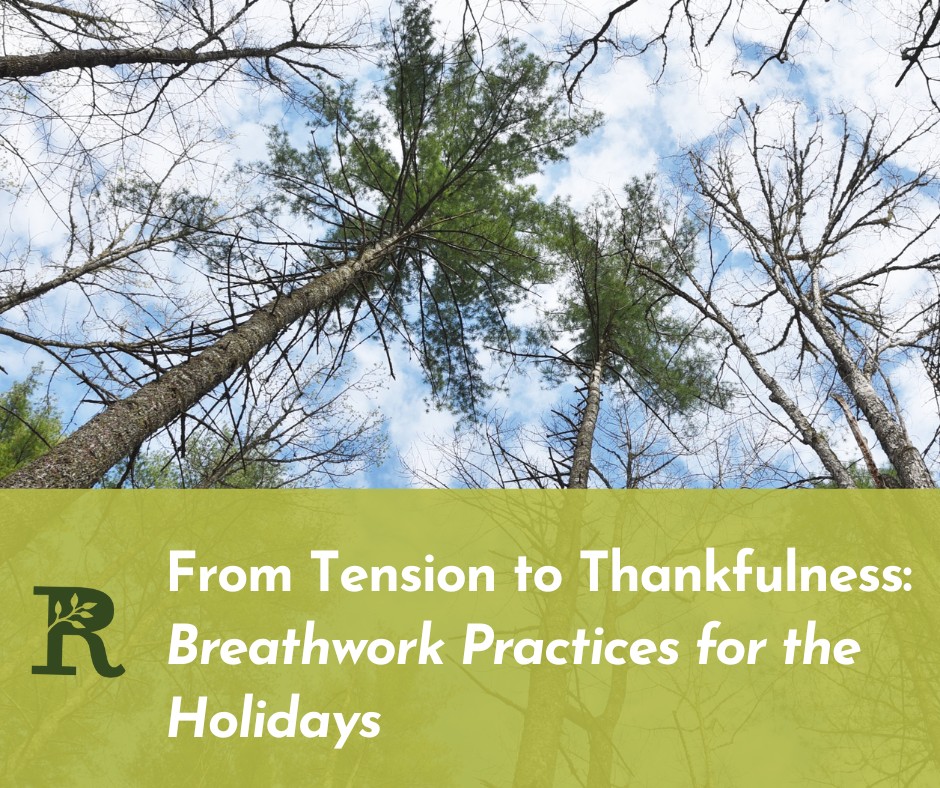
For most of my life, I never thought about breathing. It was automatic, something my body just did. But what I didn’t realize was that how I was breathing was contributing to my migraines, nausea, constipation, and the overall sense that my gut was always on edge. My breath was shallow, caught high in my chest, and my diaphragm was locked tight. Once I discovered the power of diaphragmatic breathing, I unlocked a new dimension of gut healing that diet alone could not provide. Breathwork became one of my simplest yet most powerful tools for supporting my digestion, calming my nervous system, and strengthening my immune health.
The Breath–Gut Connection
We don’t often link breathing with digestion, but the two are intimately connected. Every time we breathe deeply into the belly, the diaphragm moves downward, massaging the stomach, intestines, and other abdominal organs. This rhythmic movement stimulates motility (the wave-like contractions that move food through the digestive tract), enhances circulation, and promotes lymphatic flow. Shallow chest breathing, on the other hand, leaves the diaphragm barely moving, starving the gut of this natural stimulation. Over time, this contributes to sluggish digestion, constipation, bloating, and even gut inflammation.
Stress, the Nervous System, and Your Gut
Another reason breath is so powerful is its direct impact on the nervous system. Most of us live in a chronic state of fight-or-flight—our sympathetic nervous system is overactive, keeping us alert, tense, and stressed. In this state, digestion is not a priority. Blood is diverted away from the gut toward the muscles, motility slows, and the microbiome can shift in unfavorable ways. Breathwork helps flip the switch, activating the parasympathetic nervous system—the “rest and digest” state. With a few minutes of intentional breathing, you can literally tell your body it’s safe to relax, making digestion smoother and more efficient.
My Experience With Breathwork
I used to live in a body that felt clenched, as if I was bracing for impact at all times. My migraines were often preceded by nausea and constipation, and I carried a constant sense of unease in my belly. When I began practicing diaphragmatic breathing—sometimes lying down, sometimes sitting quietly with one hand on my chest and one on my belly—I was stunned at how foreign it felt to let my abdomen expand. Slowly, I retrained my body to release the tension. Over time, this simple practice brought me fewer digestive flare-ups, calmer nerves, and a deeper sense of connection with my body. Breath became not just a tool but a lifeline.
Signs of Dysfunctional Breathing
Many people don’t realize they are shallow breathers. Here are some signs your breath may not be supporting your gut health:
- Chest rising and falling with each breath instead of the belly expanding
- Neck and shoulders doing most of the work of breathing
- Frequent sighing, yawning, or feeling like you can’t get a deep breath
- Tension or tightness in the solar plexus or belly area
- Digestive issues like bloating, constipation, or reflux that worsen with stress
- Fatigue or brain fog despite eating nourishing foods
If any of these sound familiar, practicing diaphragmatic breathing can be a game changer.
How Breathwork Benefits Digestion
Here’s how a few minutes of intentional breathing can impact your gut:
- Improves Motility: The diaphragm’s movement stimulates peristalsis, supporting regular bowel movements.
- Enhances Circulation: Deep breathing increases oxygen delivery to digestive organs.
- Boosts Lymphatic Flow: Breath helps clear waste and toxins through the lymph system.
- Reduces Inflammation: Activating parasympathetic mode lowers stress hormones that drive gut inflammation.
- Balances the Microbiome: A calm nervous system fosters a healthy microbial environment.
These benefits don’t happen overnight, but with consistent practice, the shifts add up. Breath becomes a foundation you can return to again and again.
Simple Breathwork Practice for Gut Health
Here’s a practice you can try today:
- Sit or lie down comfortably. Place one hand on your chest and one hand on your belly.
- Inhale slowly through your nose, aiming to expand your belly first, then your ribs, then your chest.
- Exhale gently through your mouth, allowing your body to soften and release tension.
- Continue for 5–10 minutes, noticing the movement of your diaphragm.
At first, you may feel resistance—your belly might feel locked. That’s normal. Over time, this practice helps re-train your body to breathe fully and deeply, releasing tension and stimulating digestion naturally.
Breath as Emotional Release
One of the most surprising parts of breathwork for me was the emotional release it brought. As I softened into belly breathing, I realized how much grief and fear I had been holding in my core. Every exhale became an invitation to let go—not just of physical tension but of old stories and stress patterns. My gut began to feel safer, less like a clenched fist and more like a soft, resilient center. This emotional unwinding is a vital part of gut healing, because the gut and nervous system are deeply intertwined.
Everyday Breath Habits
You don’t need long, formal sessions to benefit from breathwork. Try weaving it into your daily life:
- Pause before meals and take 3 slow, deep belly breaths to prepare your gut for digestion.
- Use breath to reset when you feel stressed—inhale for 4 counts, exhale for 6.
- Breathe deeply when walking outside, syncing your steps with your breath.
- Practice a few minutes of breathwork before bed to support restful sleep and overnight repair.
These micro-practices add up, creating a steady foundation of calm that your gut will thank you for.
The Takeaway
Breath is free, accessible, and always available, yet most of us barely scratch the surface of its healing power. For me, learning to breathe deeply into my belly was as transformative as changing my diet. It soothed my migraines, eased constipation, and gave me a sense of inner spaciousness I had never known before. If your gut feels tight, stuck, or stressed, start with your breath. It may be the simplest, most profound step you can take toward gut healing.























0 Comments